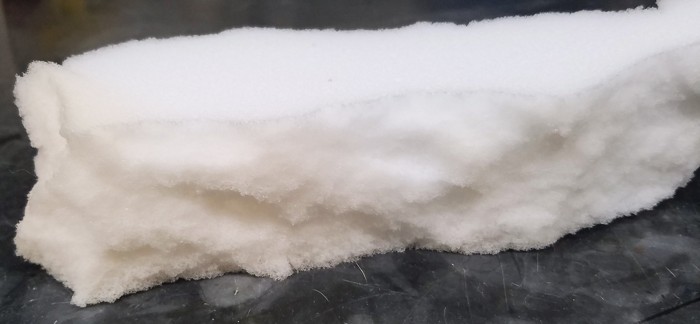Polyurethane shows up in all sorts of consumer products: seat cushions in furniture and vehicles, car bumpers, shock-absorbing sneaker soles, and more. The global market for polyurethane was over $19 billion last year, and when those products wear out they generate vast quantities of waste—more than 1 million metric tons annually in the US alone. But the very thing that gives polyurethane its strength and durability—crosslinked polymer chains—makes it tough to reprocess into new products of comparable value. Instead of dumping it into landfills or “downcycling” it to make carpet padding, a group of researchers has shown they can break those crosslinks and reform the material to use in new products of similar commercial value to the original (ACS Cent. Sci., 2020, DOI: 10.1021/acscentsci.0c00083).
GENERAL OVERVIEW
Safe Handling of Methylene Diphenyl Diisocyanate and Toluene Diisocyanate are two training programs designed to inform employers and employees of the potential hazards associated with the handling of methylene diphenyl diisocyanates (MDI) and toluene diisocyanates (TDI) and best practices to minimize potential risks. The program also discusses best practices for drum or intermediate bulk container handling, unloading MDI/TDI from tank containers (isotainers), cargo tank trailers, and rail tank cars, as well as emergency response procedures and proper disposal.
This video presentation is only one part of a comprehensive training program on the safe handling of MDI. For optimum results, this presentation should be a part of your hazard communication program, supplemented with hands-on exercises, and reporting procedures, along with evacuation drills in case of an accidental spill or leak. Any company specific or facility specific policies and procedures relating to the handling of MDI should be discussed when presenting this program.
TARGET AUDIENCE
All individuals who handle MDI or TDI, and its derivatives—especially those who are involved in the handling of drums or intermediate bulk containers, and the unloading of tank containers (isotainers), cargo tank trailers, and rail tank cars—and their supervisors or team leaders will benefit from viewing this program.
FORMAT
The Safe Handling of Methylene Diphenyl Diisocyanate and Toluene Diisocyanate program has been divided into seven parts so that training can be specifically targeted to the container in which MDI/TDI is received. Depending on what type of transfers workers are being trained for, all employees will view both Part One–Hazard Communication and Part Six–Emergency Response. Then choose one or more of the other parts based on how MDI/TDI is received at your facility.
MDI Videos
MDI Video – Introduction – Safe Handling of Methylene Diphenyl Diisocyanate
MDI Video – Part One – Hazard Communications
MDI Video – Part Two – Drum and Intermediate Bulk Container Handling
MDI Video – Part Three – Tank Container (Isotainer) Transfers
MDI Video – Part Four – Cargo Tank Trailer Transfers
MDI Video – Part Five – Rail Tank Car Transfers
MDI Video – Part Six – Emergency Response
TDI Videos
TDI Video – Introduction – Safe Handling of Toluene Diisocyanate
TDI Video – Part One – Hazard Communications
TDI Video – Part Two – Drum and Intermediate Bulk Container Handling
TDI Video – Part Three – Tank Container (Isotainer) Transfers
TDI Video – Part Four – Cargo Tank Trailer Transfers
TDI Video – Part Five – Rail Tank Car Transfers
TDI Video – Part Six – Emergency Response
https://polyurethane.americanchemistry.com/Health-Safety-and-Product-Stewardship/MDI-TDI-Video-Series/
